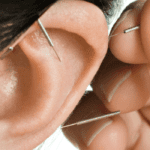Over 32.5 million adults in America are affected by osteoarthritis.
It’s the most common type of arthritis caused by the wear and tear of the protective cartilage at the end of bones.
Osteoarthritis can damage any joint. It often affects the hands, knees, or hips but can also affect your spine.
Osteoarthritis can negatively impact your quality of life; having a comprehensive treatment plan is crucial. Chiropractic care for osteoarthritis can help by limiting side effects and complications. Find out how chiropractic treatments help you achieve a better quality of life and the chiropractic benefits you can achieve.
What is Osteoarthritis?
Cartilage is a hard, slippery tissue that allows your joints to move without friction. Worn-down cartilage won’t protect your bones from rubbing against each other.
This gradual loss of the cartilage cushioning the ends of your joint’s bones leads to osteoarthritis.
Osteoarthritis is often referred to simply as a “wear and tear” disease, and it can affect the entire joint, not just the cartilage. It also inflames the joint’s lining. These can change the bones and deteriorate the connective tissues holding your joints together and keeping your muscles attached to your bones.
Osteoarthritis patients often experience pain and stiffness in their joints whenever they move. Their movements are often limited, and they may feel grating whenever they move or use their joints. Their joints may also feel more tender or swollen.
What Are the Risk Factors for Osteoarthritis?
These factors can increase your chances of developing osteoarthritis:
-
Old age – the older you are, the higher your risk of osteoarthritis.
-
Sex – Women are at higher risk of osteoarthritis, though experts aren’t sure why.
-
Obesity – The heavier your body weight is, the higher your chances of developing osteoarthritis. Extra weight stresses weight-bearing joints like knees and hips. Fat tissues also produce proteins that lead to harmful inflammations around and in your joints.
-
Previous joint injuries – Injuries caused by playing sports or an accident increase your risk of developing osteoarthritis. Even old injuries that seem to have healed many years ago increase your chances of developing osteoarthritis.
-
Repetitive stress on joints – Jobs or sports that put repetitive stress on your joints can lead to osteoarthritis.
-
Genetics – Some people have a genetic tendency to develop osteoarthritis.
-
Bone defects – Some people are born with deformed bones or damaged cartilage that wears down more easily.
-
Metabolic diseases – Some metabolic diseases like diabetes and iron deficiency can lead to osteoarthritis.
How Is Osteoarthritis Managed?
Unfortunately, there is no cure for osteoarthritis, and the damage to your joints can never be undone. Doctors treat symptoms that include weight loss, increased physical activity, physical therapy, and muscle strengthening exercises. They may also use assistive devices like crutches and canes or recommend medications. If nothing works, they may also suggest surgery.
Self-management strategies also help you gain confidence in managing your condition so you can continue doing the things that matter to you most. These include:
Engaging in Physical Activities
Experts recommend 150 minutes of moderate exercise per week for adults. Every minute of activity counts, and any activity is better than none. Walking, swimming, and biking are good options for moderately low-impact activities. Aside from managing osteoarthritis, it also reduces your risk of developing heart disease, stroke, and diabetes.
Losing Weight
Losing the extra weight helps reduce the pressure on your joints, especially weight-bearing joints like the knees and hips. A healthy weight helps reduce pain, improve function, and slow down the progression of osteoarthritis.
Doing Activities That Are Easy on Your Joints
Joint injuries can make osteoarthritis worse. It’s best to stick to activities like walking, biking, and swimming that are easy on your joints and pose little risk of injury. They also don’t twist your joints or strain them too much.
Consulting Your Doctor
Take an active role in managing your arthritis by following the treatment plan prescribed by your physician and visiting them regularly. This is particularly important if you have heart disease or diabetes.
Learning Self-management Skills
Joining a self-management education class can help people with chronic conditions like osteoarthritis understand how their conditions affect their lives, increase their confidence in controlling their symptoms, and how to live well with their condition.
Chiropractic Care for Osteoarthritis
Chiropractic treatments are a non-medical option for easing the pain in your joints. Popping necks or cracking back is not the only thing chiropractors can do; they have over 150 methods of manually adjusting the spine, joints, and muscles to varying degrees.
What To Expect
Chiropractors can adjust their treatments according to your needs. They may use gentle massages on your soft tissues to stop muscle spasms or relieve the tenderness due to your arthritis. They may also use active exercises and traction to stretch your joints slowly and increase your range of motion.
Your chiropractor will take your medical history and examine every joint to determine the best approach for you.
How Chiropractors Can Help
Aside from providing chiropractic care for osteoarthritis, chiropractors can help you identify your most affected joints and align your muscles and ligaments. They may also help you perform muscle strengthening exercises to support the areas around the joint. Lastly, your chiropractor can review therapies like laser therapy, acupuncture, and massage therapy that could help with recovery.
Is Chiropractic Care For Osteoarthritis Safe?
Chiropractic is the best treatment for neck or back pain caused by osteoarthritis. However, you must be careful if you have an inflammatory disease like rheumatoid arthritis, psoriatic arthritis, or ankylosing spondylitis.
Patients with active inflammation should not undergo chiropractic services and treatments. Uncontrolled swelling can make adjustments dangerous.
Instead of chiropractic care for osteoarthritis, chiropractors can offer adjunctive therapies to help with pain management:
-
Ultrasound – Ultrasound is not just for imaging. It also produces sound waves that can massage soft tissues and reduce swelling, stiffness, and pain.
-
Electrotherapy – It may sound painful, but it’s not. Electrotherapy can treat tissue injuries using tiny electric pulses that stimulate nerves and muscles.
-
Cold or low-level lasers – This treatment involves non-heat emitting lasers that penetrate the tissue and can sometimes reduce inflammation.
-
Infrared sauna – An infrared sauna is a room that uses controlled heat to reduce pain and increase circulation.
Start your journey to wellness with Advanced Chiropractors Group.
Our partner chiropractors in Clearwater, FL, can tell you everything you need to know about osteoarthritis and chiropractic care. There might be no cure for osteoarthritis, but you can manage it with their help. They also provide chiropractic services that help with disc herniation and whiplash. Contact us today for any questions and concerns you may have; we’ll be there to answer them.








